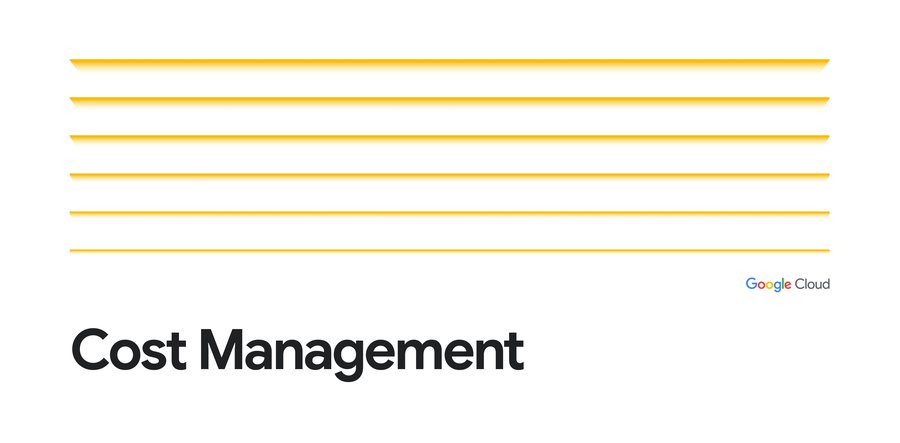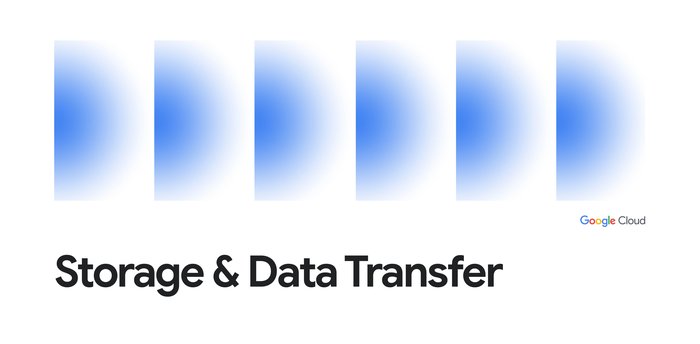Public cloud pricing, explained
The Google Cloud content marketing team
Here’s a sobering stat: cloud customers waste up to 35 percent of their spend on resources they never end up using, according to RightScale. Part of the problem lies in confusing pricing models that can get in the way of finding the perfect fit for your specific needs. More than 70 percent of CIOs say that the sheer number of different ways to pay makes selecting the right cloud solution complicated, Vanson Bourne has found.
To make the right choice for your business, understand all your options—from how pricing works to exactly what’s included. Follow the steps below to help sort through the fine print and spot the best deal.
Confirm the basic services, from security to support
First and foremost, vet each provider and plan by ensuring that all the fundamentals are present and accounted for. You’ll want to add any business-specific requirements to this preliminary checklist of must-haves:
Compliance with data privacy and security standards, verified by independent audits.
A variety of customizable support options for a predictable, reasonable fee.
A history of ongoing cost reductions that pass along savings as the underlying hardware gets cheaper.
Identity and access management tools that give you control over your cloud resources.
APIs that make it easy to access cloud services, enabling greater efficiency and automation.
Affordable rates for your geographical location(s) of choice.
Tools and resources to help facilitate a seamless, cost-effective migration.
Performance that’s up to your standards—and is worth the price.
Additionally, as you compare pricing options, remember to leave room for agility and elasticity. Public cloud providers committed to openness offer freedom from vendor lock-in, but some providers reserve their best rates for customers willing to pay up front, sign a long-term contract, and surrender the ability to make adjustments.
The reality is that no company can perfectly predict its future needs, especially in a rapidly changing environment. To avoid buying resources that go unused or paying a premium for outgrowing your inventory, look for pricing models that grant both affordability and flexibility.
Ask the right questions to crack the cost of compute
Once you’ve drafted a shortlist of cloud providers and pricing plans, it’s time to examine the details. Since compute resources account for 80 percent of the average business’s cloud spend, according to RightScale, you’ll probably want to start there. Ask the following questions to compare your options.
How much do instances cost?
See what each provider charges for spinning up standard virtual machine instances on demand. You’ll notice that discrepancies between similar instance types, such as varying amounts of memory and whether local storage is included, make a fair comparison difficult. Also, some providers let you create custom VMs to match your workload, which can be much cheaper than sizing up to a predefined instance type. Given these variables, price out a few scenarios that reflect your current applications and processes.
What are the billing increments?
Some cloud providers charge for compute instances by the minute while others round up to the nearest hour. Per-minute models can amount to substantial savings, especially if you run workloads for short periods of time. Imagine, for example, that you use autoscaling to increase capacity during a spike in traffic that lasts 1.5 hours. With hourly billing, you’ll continue to pay for those additional VMs for an extra 30 minutes.
How do discounts work?
Most leading cloud providers offer discounted rates on VM usage to loyal customers. Often, these discounts require a one- or three-year commitment to a particular instance type, with the longer term yielding the most savings. The more money you pay up front, the more you save over on-demand pricing. For greater agility, some providers offer an alternative model: discounts that kick in automatically when workloads run for a significant portion of the month without hinging on a commitment level or upfront payment.
Total Discount Earned
How much flexibility do I give up for low prices?
For predictable workloads, a one- or three-year commitment might make sense. If so, look for providers that let you purchase your desired number of cores and amount of memory, rather than constraining you to a predefined instance type. That way, you can change VM sizes and reallocate your resources to meet your evolving needs, while continuing to receive the full discount.
Can I buy cheaper instances for short-term workloads?
Some cloud providers sell their spare capacity at a fraction of the cost of on-demand VMs. Consider taking advantage of these instances for compute-intensive tasks that tolerate downtime and interruption, such as batch jobs, data processing, video encoding, and continuous integration. Depending on the provider, pricing either fluctuates based on customer bidding or remains fixed to enable easier budgeting.
How can I control costs?
To make cost control more seamless and effortless, consider public cloud providers with built-in tools for optimizing resource utilization, monitoring spend, and setting budgets and alerts. Some vendors also provide autoscaling capabilities, which can save you money by automatically shutting down excess instances.
Include data storage and analytics services to assess total spend
While many companies focus on compute resources first, storage and analytics are gaining ground as use cases for cloud services. Consider the following questions as you evaluate service options.
How much will I pay for the types of storage my business needs?
Most major cloud providers offer a range of storage options, including object and block storage, relational and nonrelational databases, and data warehousing. Pricing is usually based on a per-gigabyte monthly rate, along with any applicable charges for network egress and API requests—but it can get more complicated depending on the service and vendor. With some cloud providers, for example, the price per gigabyte decreases as your overall storage usage increases.
And finally, remember that you’re often comparing apples to oranges. For example, two competing block storage solutions can perform very differently from a latency or throughput perspective.
What’s the cost of ensuring high availability?
If customers or employees around the world rely on consistent access to your data, you may want to store it in two or more geographically distributed regions. This type of redundancy doesn’t always come standard. Some providers offer storage classes with built-in replication across multiple regions and automatic failover in the event of an outage. Others require you to manually configure replication to a different region and pay for two separate storage buckets, along with any resulting transfer fees.
Are there cheaper options for inactive data?
In addition to high-availability, low-latency storage for use cases like serving websites and streaming video, many cloud providers offer lower-cost storage classes for archives, backups, disaster recovery, and other infrequently accessed data. Customers pay a reduced monthly cost per gigabyte, but they’re also charged for every gigabyte they retrieve or delete early. Some providers tier their retrieval pricing based on how quickly data becomes available, with wait times ranging from several minutes to half a day.
They may also require you to submit—and pay for—a retrieval request. Other providers simplify the process by offering instant retrieval as the only option and eliminating the need to make a request.
To choose the right cold storage solution, imagine a scenario in which your business has to fetch its archived data. Would every last millisecond matter or could you endure a little latency for the right price?
How is data warehousing priced?
Increasingly, businesses are harnessing the power of cloud to store and analyze large datasets without having to manage on-prem infrastructure. Pricing for these services may be based on the number and type of provisioned instances, with discounts applying for long-term commitments and upfront payment. Other providers charge separate fees for the amount of data you store and the amount of data you process, giving you more flexibility and closely aligning costs with consumption. If you expect to run a high volume of queries or prefer a predictable monthly expense, consider solutions with a flat-rate pricing option.
How can I control costs?
Seek out ways to track and manage your spend, like budget alerts, audit logs, and the ability to set daily query quotas for projects or individuals. Some providers offer lifecycle management tools to help you optimize your storage costs. For example, you can create rules to automatically delete older versions of objects or transition data of a certain age into a colder, less expensive storage class.
From historical pricing trends to balancing affordability with flexibility, there’s a lot to consider as you examine cloud providers and their payment options. You’ll also want to keep in mind any business-specific requirements and concerns. Along with using this guide to help estimate your costs, take advantage of the free trials or credits that many providers offer to run your own tests or develop proofs of concept. Asking the right questions of your potential service provider can help ensure you get the best deal both now and in the future.


